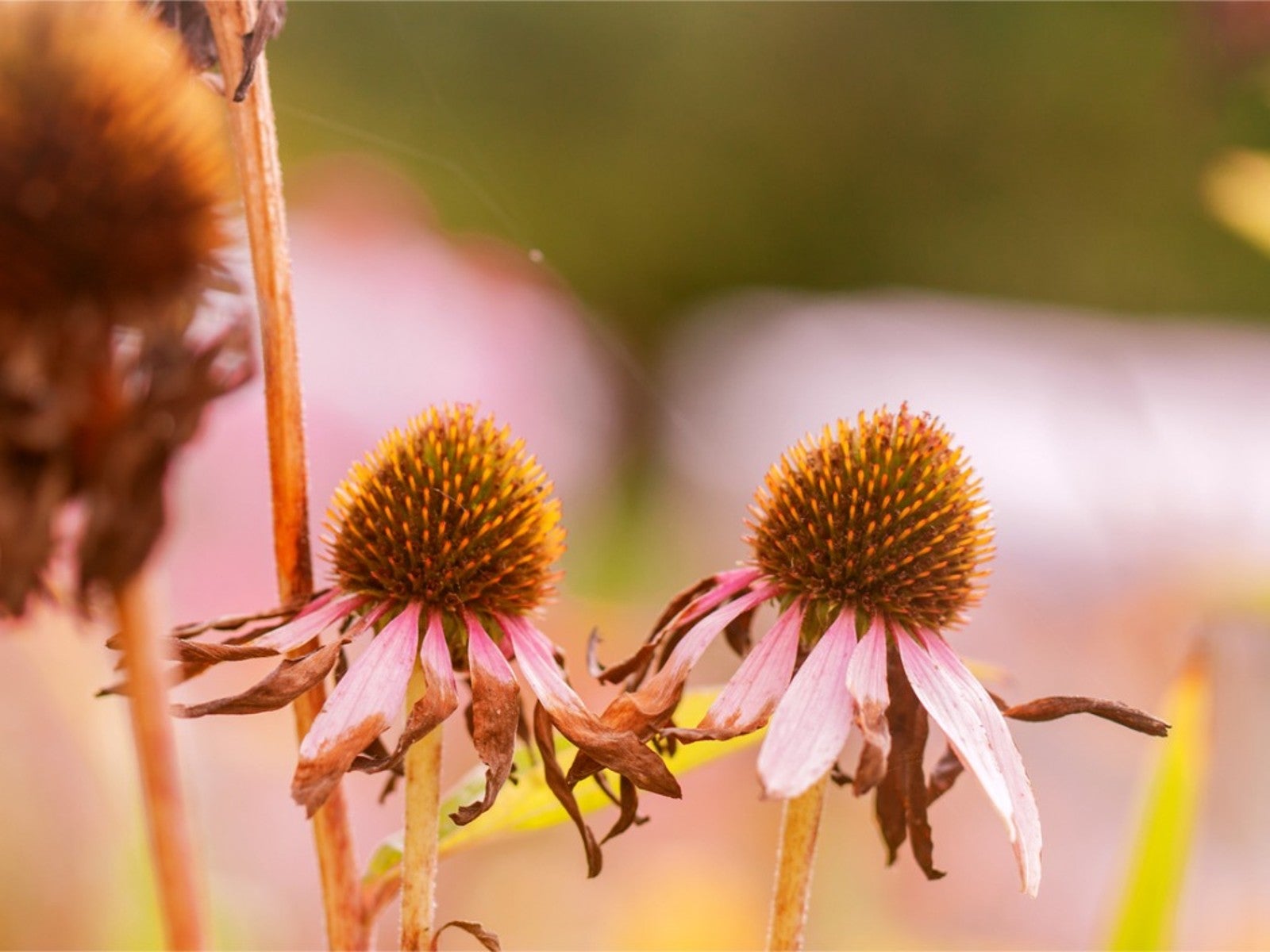What Perennials Not To Cut Back In Fall


Perennials are plants that live at least two seasons, and some can live for many years. Home gardeners often cut back perennials in fall, but not every perennial needs to be cut back, so it’s good to know what perennials to cut back in fall. Or, more particularly, what perennials not to cut back in fall. Read on for the information on fall pruning.
Should You Cut Back Perennials in the Fall?
When your region experiences the first freeze of autumn, you don’t always have to run for the pruners. There may be some good reasons to leave the foliage, flowers, fruit and seedheads to overwinter in the garden and cut them back in spring.
First, leaving some drying perennials in place will make the garden interesting during the winter months. They trap other fallen leaves and, together, offer a blanket of protection from winter cold for the plants’ roots. Finally, the dead plant material also provides food and a place to nest for insects, small mammals, and birds. Any perennials that can assist in these winter goals should be allowed to stay in the garden until spring.
What Perennials NOT to Cut Back in Fall
Rather than look for a list of perennials to cut back in fall and a list of what should not be cut back, think of it in terms of the purposes the perennials can serve.
Perennials that Feed Birds
Birds can have a hard time in winter finding seeds or insects to eat. Leaving seedheads helps your feathered friends survive the cold months. Any perennials that have seeds or fruit late in the season are good candidates. Think ornamental grasses, zebra grass, purple coneflowers, coreopsis, sunflower, sedum plants, prairie gay feather, switchgrass, black-eyed Susan and Joe-Pye weed.
Perennials that Are Home to Beneficial Insects
Beneficial insects sometimes overwinter in native plants as pupae, caterpillars or eggs. These native plants offer them shelter from predators. Leave these perennials to trim until spring.
Low-Growing Perennials
Low-growing perennials like moss phlox, hellebores, hardy geraniums and dianthus don’t need fall pruning. Wait until spring.
Sign up for the Gardening Know How newsletter today and receive a free copy of our e-book "How to Grow Delicious Tomatoes".
Evergreen or Semi-Evergreen Perennials
Perennials with evergreen foliage can also be left until spring. This includes plants like hellebore and Christmas fern. Trim back these plants after new growth begins.
Perennials that Add Winter Interest
Limiting fall clean-up can make the garden more interesting in winter. That’s because the dry stalks, fading leaves, ornamental grasses, and seed pods create a different look, especially where snow ornaments the garden. Switchgrass, feather reed grass and Chinese silver grass move in the breeze and provide movement.
Perennials that Need Extra Winter Protection
Some perennials are called “tender.” Think roses or butterfly bushes. As the name suggests, tender plants don’t do well in winter and usually suffer from dieback. The more wood you leave in place for these plants, the more chance they have to make it through the winter. Other tender perennials include red-hot poker, garden mums and Montauk daisy.
What Perennials to Cut Back in Fall
Perennials that Are Diseased
Plants that are troubled by disease should be pruned back in fall. This will limit the possibility that the disease will attack the garden in the following season.
Perennials that Are Home to Pests
Cutting back perennials in fall is also a good idea for plants that are home to insect pests. Remember not to compost any infected or diseased stems and leaves.
Perennials with New Basal Leaves
Some plants grow new basal leaves after the summer season. These include Shasta daisy, yarrow, and globe thistle. These perennials should have their stalks cut down in fall without disturbing this new growth.
Perennials You Don’t Want to Prune In Spring
The more perennial plants you trim back in fall, the less work you have to do in spring. So go ahead and cut back any plants that do not provide wildlife benefits or winter interest.
How to Prune Perennials in Fall
When pruning perennials in autumn, don’t chop at ground level. Leave about two inches (5 cm) of stem above the soil to mark its location, since otherwise you might dig into them accidentally before new growth appears in spring. Use bypass pruners or hedge clippers. A power hedge trimmer can work even more efficiently.

Teo Spengler is a master gardener and a docent at the San Francisco Botanical Garden, where she hosts public tours. She has studied horticulture and written about nature, trees, plants, and gardening for more than two decades, following a career as an attorney and legal writer. Her extended family includes some 30 houseplants and hundreds of outdoor plants, including 250 trees, which are her main passion. Spengler currently splits her life between San Francisco and the French Basque Country, though she was raised in Alaska, giving her experience of gardening in a range of climates.